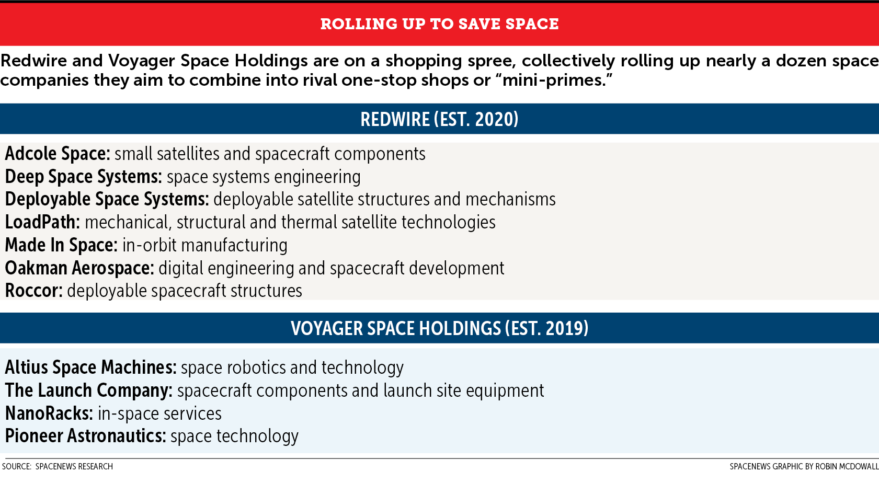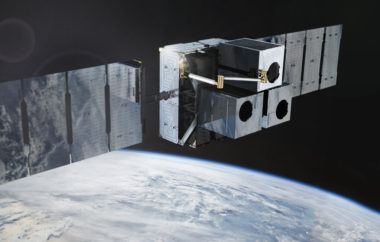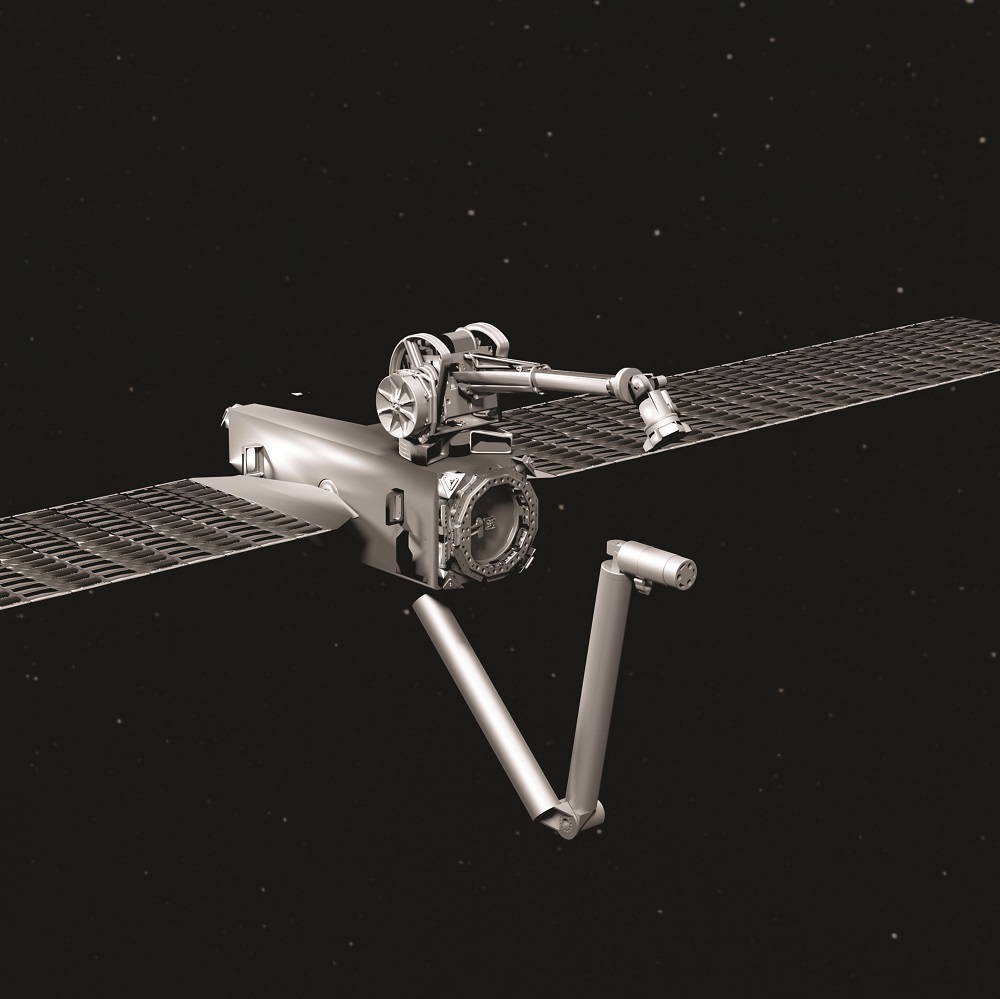“It validates the fact that the industry is maturing, and that it’s not a bunch of crazy rocket scientists out in the field blowing stuff up.”
SAN FRANCISCO — Long-term space investors aren’t surprised by the recent surge of space industry mergers and acquisitions. In fact, they say, it’s right on time.

“We all knew it was going to happen,” said Dylan Taylor, Voyager Space Holdings chairman and CEO. “This is the way industries evolve.”
Venture capitalists bet $1.8 billion on space startups in 2015, which was more than the total space-related venture investment for the previous 15 years. Since venture funds generally have 10-year time horizons, investors tend to look for exits in five to seven years.
“We always expected to see exits around the year 2021,” said Chad Anderson, founder and managing partner of Space Capital, a seed stage venture capital firm.
Even if the timing isn’t surprising, it is remarkable how the current wave of mergers and acquisitions coincides with investor attention.
“Public market and private market interest in space companies is higher than it’s ever been without a doubt,” Anderson said.
SpaceX deserves some of the credit, said Tess Hatch, a partner at Bessemer Venture Partners, a San Francisco venture capital firm with investments in Rocket Lab and Spire.
“I think a lot of people would love to own a bit of SpaceX,” Hatch said.
Many of the recent mergers and acquisitions stem from Amergint Technologies Holdings, Redwire and Voyager Space Holdings, which are purchasing space companies, as well as the special purpose acquisition companies (SPACs) wooing space startups with the promise of a shortcut to public markets. Meanwhile, government agencies are clamoring for innovative technology, which is prompting prime and subprime contractors to buy shares in nimble startups.
“To me it validates the fact that the industry is maturing, and that it’s not a bunch of crazy rocket scientists out in the field blowing stuff up,” said Taylor, a longtime space angel investor.

ROSY FORECASTS
For most of the last decade, a handful of investment firms focused on the rapidly emerging entrepreneurial space sector. That changed in the last couple of years when Bank of America Merrill Lynch, Goldman Sachs and Morgan Stanley issued separate reports describing the future value of the space industry in trillion-dollar terms.
Those rosy forecasts helped some startups attract financial backers. Others, though, still struggled to obtain the significant capital they needed to establish satellite communications constellations, develop technologies for off-world mining or build private space stations.
“It’s difficult for small, nimble, innovative companies to scale, because they need to be more capable,” Taylor said. “To be more capable, they need more capital.”
In many industries, private equity investors purchase and merge similar companies to boost profits. That doesn’t work as well in the space sector where firms need to possess complementary capabilities to claim more valuable contracts, Taylor said.

Voyager sees complementary capabilities in Altius Space Machines, The Launch Company, NanoRacks and Pioneer Astronautics, firms it has acquired since it was founded in 2019. Over the coming years, Denver-based Voyager plans to continue buying space companies in an effort to create something like a mini prime contractor.
“Ultimately when a bunch of decision-makers consider a moon mission or a private space station, we want to be one of the companies they think can actually do it,” Taylor said. “The idea is to take all the innovation but yet scale and professionalize it in such a way that you can do significant missions.”
Redwire has a similar strategy. Formed in 2020 by private equity firm AE Industrial Partners, Redwire is creating a space infrastructure company.
In less than a year, Jacksonville, Florida-based Redwire has snapped up Adcole Space, Deep Space Systems, Deployable Space Systems, LoadPath, Made In Space, Oakman Aerospace and Roccor.
“We recognized that by bringing best-of-breed technology companies together into a single organization and combining their flight heritage, we could become that one-stop shop for not only today’s generation of in-space infrastructure, but also the next generation of in-space infrastructure,” said Peter Cannito, Redwire chairman and CEO.
TALKING SPACs
Much of the recent financial news has revolved around SPACs that offer firms a cash infusion and access to a new breed of retail investors.
“There’s definitely a shift in the public market around how it thinks about risk in businesses that have yet to reach their future potential,” said Van Espahbodi, Starburst Aerospace co-founder and managing partner. The success of Robinhood, the commission-free trading app that gained fame through the GameStop trading frenzy, shows that you don’t have to be a Wall Street guru to know which companies are exciting and which ones you want to invest in, he added.
Additional investment is being spurred by government spending. For a decade, U.S. Air Force leaders talked about buying constellations of smaller, less expensive satellites to eliminate what Gen. John Hyten, now vice chairman of the Joint Chiefs of Staff, famously called “fat, juicy targets.” As the Pentagon’s Space Development Agency and U.S. Space Force begin putting those plans into action, prime and subprime contractors are picking up shares of small space companies with innovative technology. The latest example was Raytheon Technologies’ 2020 acquisition of small satellite manufacturer Blue Canyon Technologies.
“Whether it be venture capital, private equity, a SPAC or even a traditional IPO, these are all just mechanisms for obtaining the capital that high-growth companies need in order to fuel their growth,” Cannito said. “At the end of the day, it really doesn’t have anything to do with your business model. Good companies attract capital and execute their plans and are successful.”
For space companies, the recent surge in merger and acquisition is likely to attract more investment.
“Something that was holding back the industry was the lack of exits and liquidity events in space specifically, and this year has definitely turned that around,” Hatch said. “When there isn’t a ton of data on possible exit scenarios that have come to fruition, it’s difficult to predict what your return on investment is going to be. Now that there are more exits, we have the data to better predict potential exit scenarios for space companies.”
That’s likely to lead to more venture investment and tee up more mergers and acquisitions.
This article originally appeared in the March 15, 2021 issue of SpaceNews magazine.
